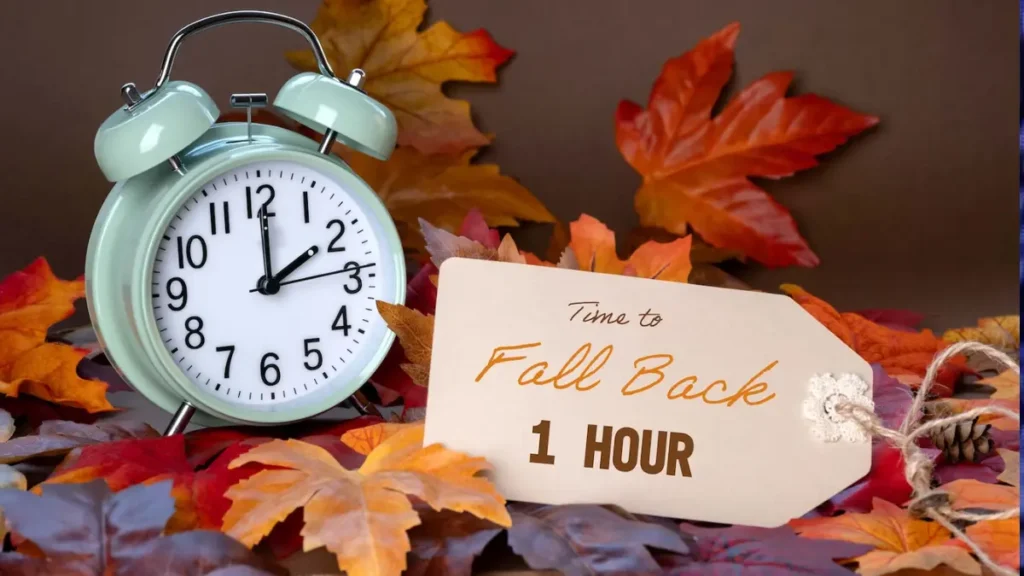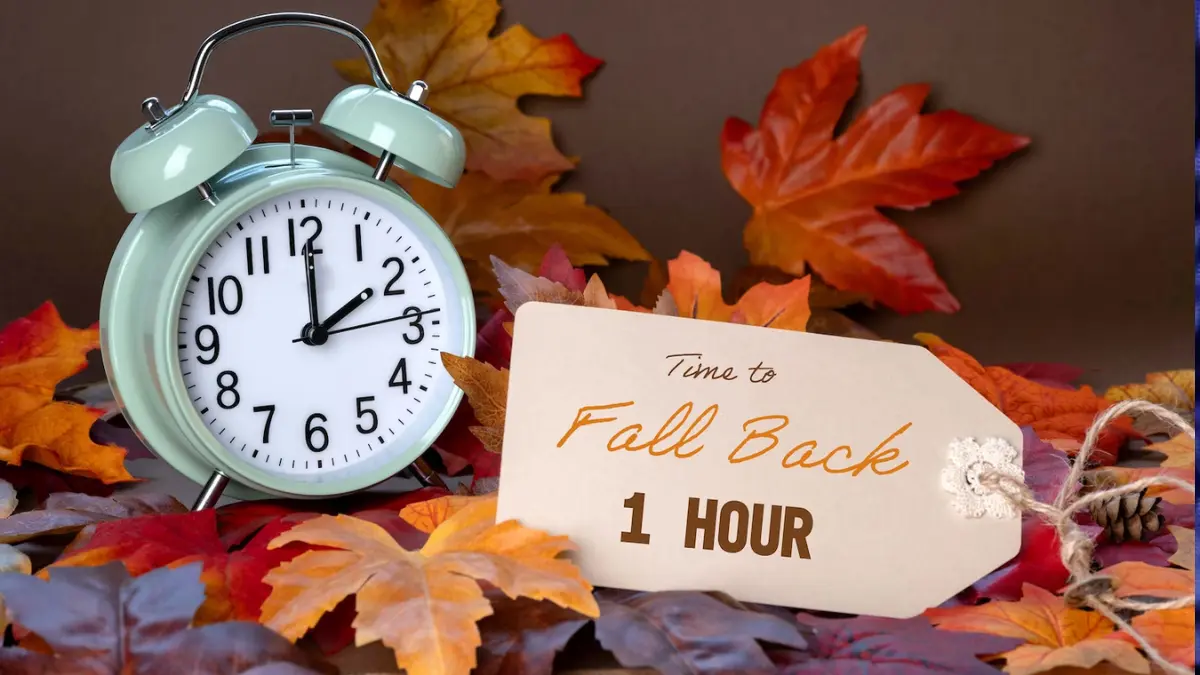Daylight Saving Time 2025 ends on Sunday, November 2, 2025. Learn when to set your clocks back, why daylight saving time exists, its history, health effects, and which states don’t observe it.
Daylight Saving Time 2025: When Does It End and What You Need to Know

As fall approaches, many Americans start wondering: When does Daylight Saving Time end in 2025? The answer is simple—Daylight Saving Time 2025 officially ends on Sunday, November 2, 2025, at 2:00 a.m. That’s when clocks fall back one hour, marking the annual transition back to standard time.
This yearly ritual impacts millions across the United States, influencing not just the time on our watches but also our sleep schedules, energy use, and even health. In this comprehensive guide, we’ll explore everything you need to know about Daylight Saving Time 2025, including its history, the reasons behind it, and how to adjust smoothly when time changes in November 2025.https://abcnews.go.com/GMA/Living/daylight-saving-time-2025/story?id=126503566
🕑 When Does Daylight Saving Time End in 2025?
The official end of Daylight Saving Time 2025 occurs on Sunday, November 2, at 2:00 a.m., when clocks fall back 2025 by one hour. This shift means sunrise and sunset will occur one hour earlier, resulting in brighter mornings and darker evenings.
In practical terms, this means that if you go to bed at 10:00 p.m. on Saturday, it will effectively be 9:00 p.m. once the time change in November 2025 takes place. The good news? You’ll gain an extra hour of sleep!
| Event | Date | Time | Action |
|---|---|---|---|
| Daylight Saving Time Begins | March 9, 2025 | 2:00 a.m. | Move clocks forward 1 hour |
| Daylight Saving Time Ends | November 2, 2025 | 2:00 a.m. | Set clocks back 1 hour |
This Daylight Saving Time fall back 2025 adjustment is observed in most U.S. states, although some exceptions exist.
🌞 The History Behind Daylight Saving Time
The origins of Daylight Saving Time go back more than a century. It was officially established in the United States through the Standard Time Act of 1918, during World War I, to conserve energy by maximizing daylight hours.
Later, the Uniform Time Act of 1966 standardized when DST would begin and end nationwide. The system was further refined under the Energy Policy Act of 2005, which extended DST by several weeks.
| Key Law | Year Passed | Purpose |
|---|---|---|
| Standard Time Act | 1918 | Introduced DST in the U.S. |
| Uniform Time Act | 1966 | Created uniform start and end dates |
| Energy Policy Act | 2005 | Extended DST to save more energy |
In 2025, lawmakers once again debated making DST permanent under the Sunshine Protection Act, though the proposal had not yet passed.
🗺️ Which States Don’t Observe Daylight Saving Time?
While Daylight Saving Time 2025 applies across most of the United States, a few regions opt out completely.
| State/Territory | Observes Daylight Saving Time? |
|---|---|
| Hawaii | ❌ No |
| Most of Arizona | ❌ No |
| Navajo Nation (in AZ, NM, UT) | ✅ Yes |
| Puerto Rico | ❌ No |
| Guam | ❌ No |
| American Samoa | ❌ No |
| Northern Mariana Islands | ❌ No |
| U.S. Virgin Islands | ❌ No |
This means that residents in these locations won’t have to adjust their clocks when the time change November 2025 occurs.
💤 Do We Gain or Lose an Hour When Clocks Fall Back?
During Daylight Saving Time fall back 2025, Americans gain an extra hour of sleep. When the clock strikes 2:00 a.m. on November 2, it turns back to 1:00 a.m., giving everyone an additional hour in their night.
However, while this sounds beneficial, it can disrupt sleep cycles and the body’s circadian rhythm. Experts suggest making small adjustments in the days leading up to the Daylight Saving Time 2025 transition to minimize sleep disruption.
🧠 Health and Safety Effects of Daylight Saving Time
The time change in November 2025 affects more than just your schedule — it can also influence your health and safety. Research published in the Journal of Clinical Sleep Medicine has linked time changes to temporary spikes in:
- Heart attacks and strokes
- Sleep disturbances
- Mood changes
- Reduced alertness and workplace accidents
Medical professionals recommend:
- Gradually adjusting bedtime by 10–15 minutes each night before the clocks fall back 2025
- Limiting caffeine and alcohol intake before bed
- Increasing morning sunlight exposure to reset your body clock
🌍 Why Do We Still Have Daylight Saving Time?
The original goal of DST was to save energy by using more natural daylight and reducing electricity consumption. However, modern research has questioned whether it still delivers those benefits.
Today, proponents argue that Daylight Saving Time 2025 provides longer evenings for recreation and economic activity. Critics, on the other hand, highlight its negative health impacts and push for permanent standard time through the Sunshine Protection Act.
🕰️ How to Prepare for the Daylight Saving Time Fall Back 2025
Here are some practical steps to make the time change November 2025 easier:
- Adjust your schedule gradually: Move bedtime earlier by 15 minutes each night before the change.
- Control morning light: Let sunlight in early to help your body reset.
- Avoid screens before bed: Reduce blue light exposure.
- Stay consistent: Try to wake up and go to bed at the same time daily.
- Plan ahead: Update clocks manually, check appliances, and adjust car clocks.
📅 Daylight Saving Time 2025: Key Dates Overview
| Event | Date | Time Change |
|---|---|---|
| DST Starts | March 9, 2025 | Move clocks forward one hour |
| DST Ends | November 2, 2025 | Set clocks back one hour |
| Next DST Start | March 8, 2026 | Move clocks forward one hour |
Remember: Daylight Saving Time 2025 affects all U.S. time zones — Eastern, Central, Mountain, and Pacific — at 2:00 a.m. local time.
🧒 Helping Children Adjust to the Time Change
Children often have a harder time adapting to new sleep patterns. Parenting experts recommend:
- Moving naps and meals slightly earlier each day before the clocks fall back 2025.
- Keeping bedroom lights dimmed in the morning to avoid early wake-ups.
- Being patient — it may take a week for kids to fully adjust to the Daylight Saving Time 2025 shift.
💡 Fun Facts About Daylight Saving Time
- The concept was first suggested by Benjamin Franklin in 1784.
- More than 70 countries currently observe some form of DST.
- Arizona doesn’t follow DST because of its hot climate — longer daylight hours would mean higher energy use for cooling.
- The European Union has proposed ending clock changes entirely, similar to the U.S. Sunshine Protection Act.
❓ Frequently Asked Questions (FAQs)
1. When does Daylight Saving Time end in 2025?
Daylight Saving Time 2025 ends on Sunday, November 2, 2025, at 2:00 a.m. Clocks are set back one hour.
2. Do we gain or lose an hour during the time change November 2025?
We gain one hour of sleep when clocks fall back 2025.
3. Why do we have Daylight Saving Time?
DST was created to make better use of daylight hours and conserve energy.
4. Which states don’t observe Daylight Saving Time 2025?
Hawaii, most of Arizona, and U.S. territories like Puerto Rico and Guam don’t follow DST.
5. Is there a plan to make Daylight Saving Time permanent?
Yes. The Sunshine Protection Act aims to make DST permanent but has not yet been passed into law as of 2025.
🏁 Conclusion
Daylight Saving Time 2025 will officially end on November 2, 2025, marking the annual “fall back” moment when Americans set their clocks one hour earlier. While many enjoy the extra hour of sleep, the Daylight Saving Time fall back 2025 event also serves as a reminder of the country’s ongoing debate over whether to keep or end this century-old practice.
As the time change November 2025 approaches, remember to adjust your clocks, prepare your schedule, and take care of your sleep health. Whether you love or loathe it, Daylight Saving Time 2025 remains one of the most talked-about seasonal transitions in America.

